Let's face it. 3D isn't just animation and flying logos. It also comes in handy for VFX and telling your story. Everybody loves disaster movies, so let's make Air Force One crash! If you want to follow along these lines and do the scene, you'll need Trapcode Particular, Tiffen's DFX v3, Video Copilot's Optical Flares, and the Jet Strike and Flight Kit packs for Element. If you don't have these, don't worry. The principles here are what's important, not the knob turning. This is mostly to show the possibilities with Element. This will go very quickly (as it's principle-driven and not a book on how to use these plugins).
- We start off with some footage taken from my hexacopter (hovering about 50 m off the ground). We'll throw away all the takeoff and landing of the drone, and use from about 4:49:10 to about 5:13:29. By the way, all of this is available on the downloadable content for this book. We even have a fire burning in the background, so we have set up a great crash site already!
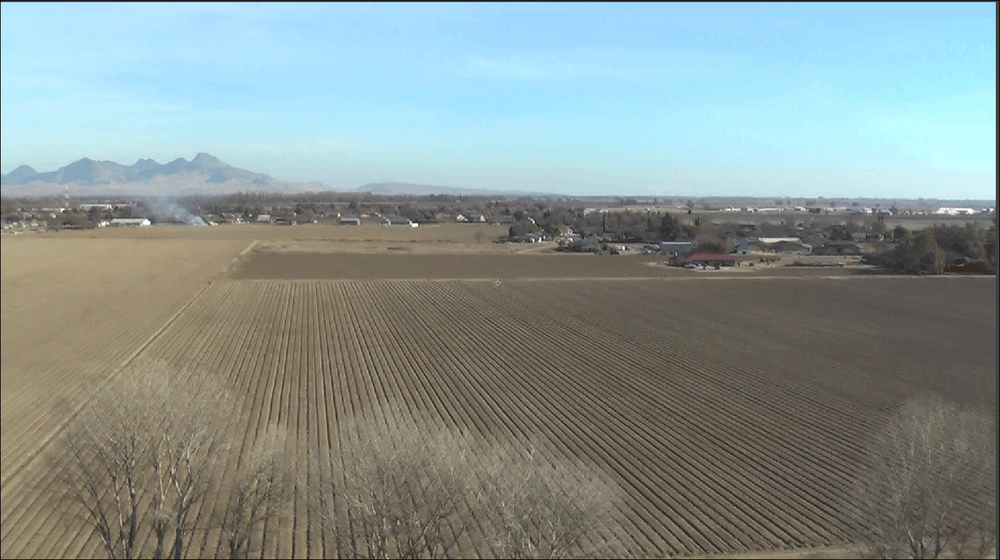
- Don't create a camera yet. The only thing in your timeline should be this footage. Now, use the 3D Camera Tracker effect on this footage. This will track hundreds of points in the footage, figure out what lens you are using, and track the movement of your camera for you!
- Once it's done solving this task for the camera (should take a couple of minutes), click on the Create Camera button in the effect (shown in the following screenshot).
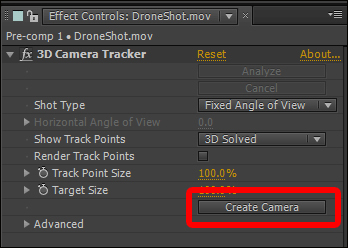
Great! Now we have a camera that moves just like our hexacopter did!
- Next, we add an Element layer, and slap in Air Force One (from the Jet Strike pack). It should be visible on the first frame, and you'll notice that the airplane hovers in the air and maintains a great position even as the camera moves.
- Create a group Null for the plane.
- Then, create a second null (that the first null is attached to). This is to prevent us from having gimbal lock. Gimbal lock is where you rotate the object, and at some point, two rotational axes actually effect the plane in the same way. Having two nulls lets us bypass this obstacle.
- Use your first null to animate the movement of the plane and the second to rotate it. Now, move the plane out of frame to the right (at beginning of the clip) and animate it to smash into the smoke the very moment that the smoke comes into view (else, it might look weird when the plane smashes into something that is already on fire).
- Add some rocking effect to the plane (rolling left/right) to make it look out of control (but remember, it's a big plane, so the movements are slow). Also, don't forget to separate your position dimensions and use continuous Bezier keyframes to make everything realistic.
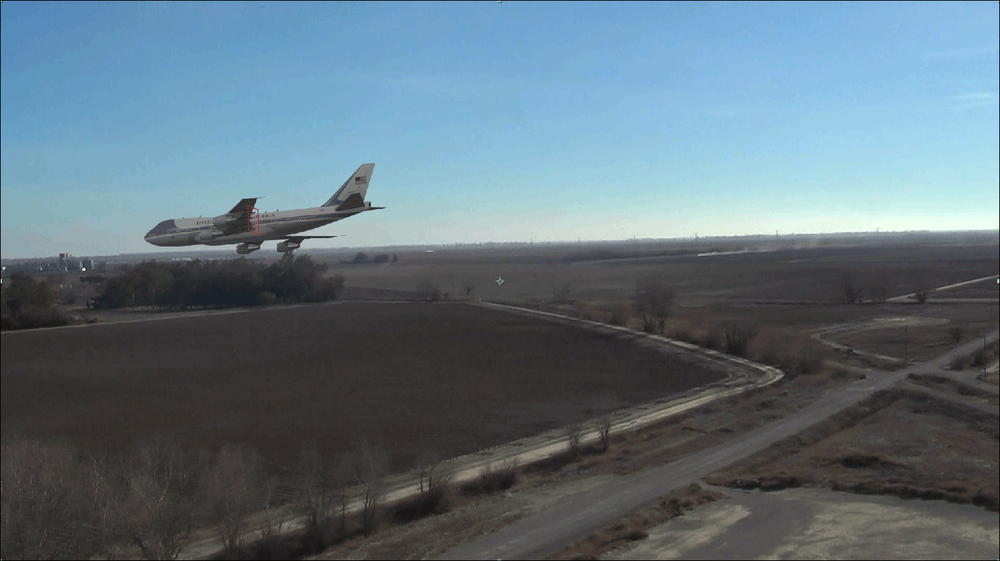
- Add some color correction to your element layer to make it blend better with the background. The preceding screenshot used both the Curves effect and the Hue/Saturation effect.
- Now, we add a point light that mimics the Sun (slightly orangey-yellow) and an ambient light that is of the same color. Adjust their position and intensity to match the environment as closely as possible.
- The Flight Kit has a lot of footage of aerial explosions. We're going to use
Aerial_Explosion_02.movand have that explosion happen when the plane hits its target. Remember that the explosion doesn't happen after the plane crashes but while it crashes. Therefore, have some overlap, and as soon as the explosion is big enough, cut your Element layer (so the plane is no longer in your scene). Also, use the transfer mode Add for the explosion. The result should look similar to what is shown in the following screenshot: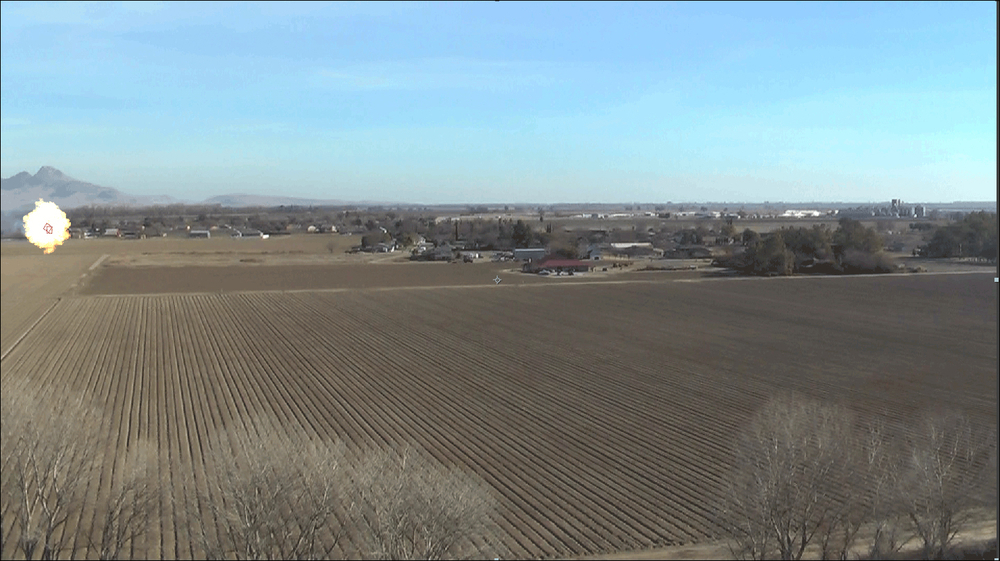
- Now, create a solid black 3D layer.
- Cut out the shape of a plane (from the top view), and copy the plane's null's X and Z keyframes, and paste them on the black layer.
- Rotate it so it's flat. This is going to be our shadow.
- Put a pretty severe blur on it, and bring its opacity down to around 20.
- Now, with your timeline marker over one of the position keyframes, select all the keyframes for the mask, and position it under the plane.
- Make sure it moves properly with the plane and meets up with it at the crash site. This is how the audience can tell if the plane is falling. You may have to keyframe the Y position of the shadow to make it realistic. Your result should look similar to the following screenshot:
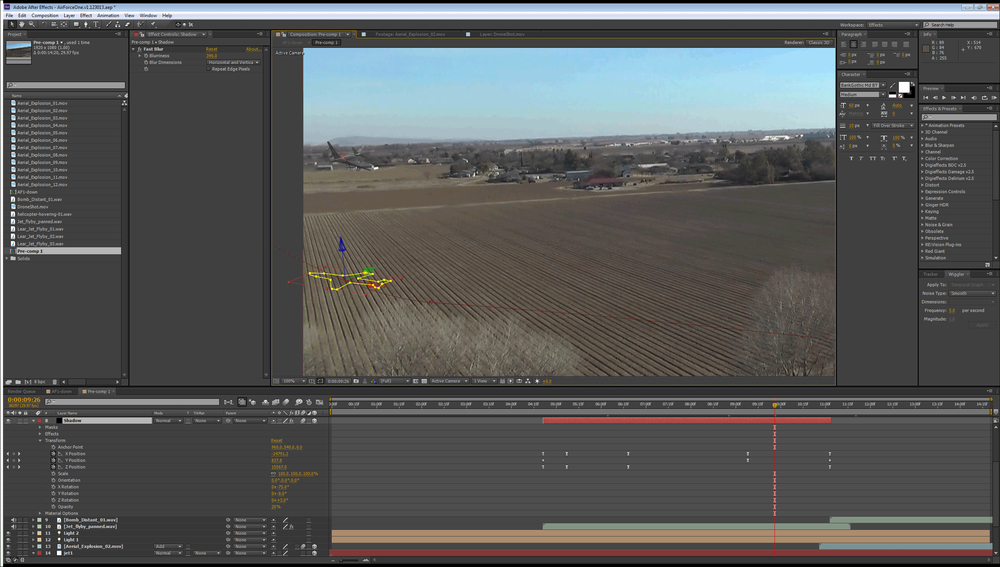
Now, the real fun begins. We already have something worthy of Xena or Babylon 5, but let's make it better! We need to have a reason for the plane to crash, so let's add fire and smoke to the engine! We need a position though. So, let's open our Element plugin and select a frame where the plane is big and in clear view.
- Under Utilities in your Element plugin, you'll find Generate 3D Position. Open this.
- Next to Select 2D Position, you'll see a crosshairs button. Click on this, and then click on the outermost engine on the right wing. You'll see a little crosshair pop up on it.
- Now, just under the Generate 3D Position option, you'll see Create 3D Null. Open this and click on the button that says Generate. Wait! You're not done.
- Now, parent the new null layer that has been created to the second null of your jet (the rotation one, which should be parented to the position one). Now, this null object will stick to the engine and follow the plane's movement.
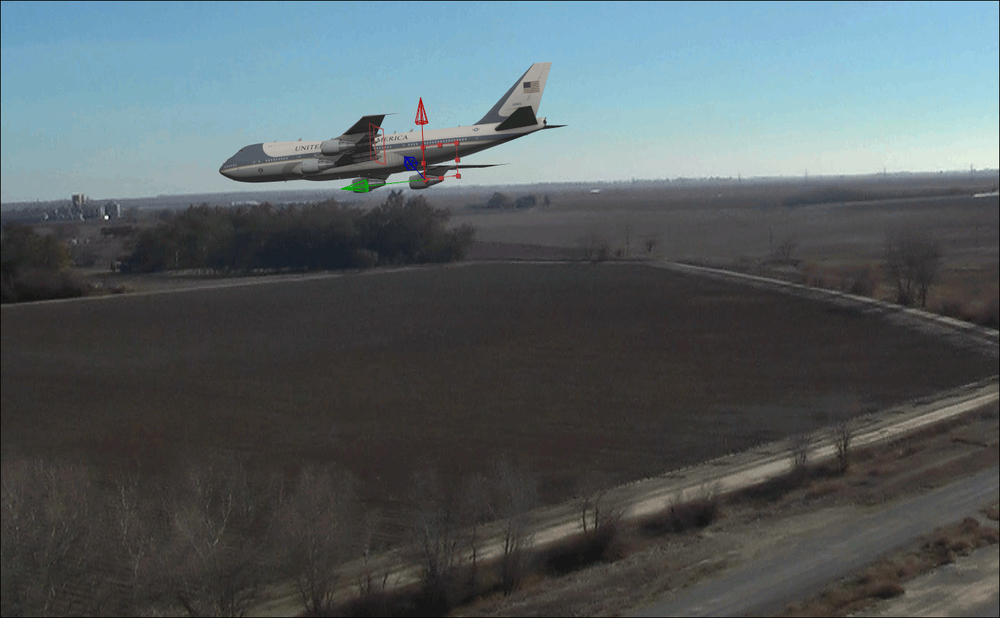
- The Particular plugin can emit particles from a light. So now, let's create a point light, position it on the engine null, and parent it to that null. The easiest way to do this is to copy the unparented coordinates of the null to it.
- Name this light
Emitter 1, and create a solid layer with the Particular plugin applied to it to create some smoke. This is a whole chapter in itself, so to keep from going on a tangent, just searchhow to create smoke with particularon Google. Then, for the emitter type, use light.The result should look similar to what is shown in the following screenshot:
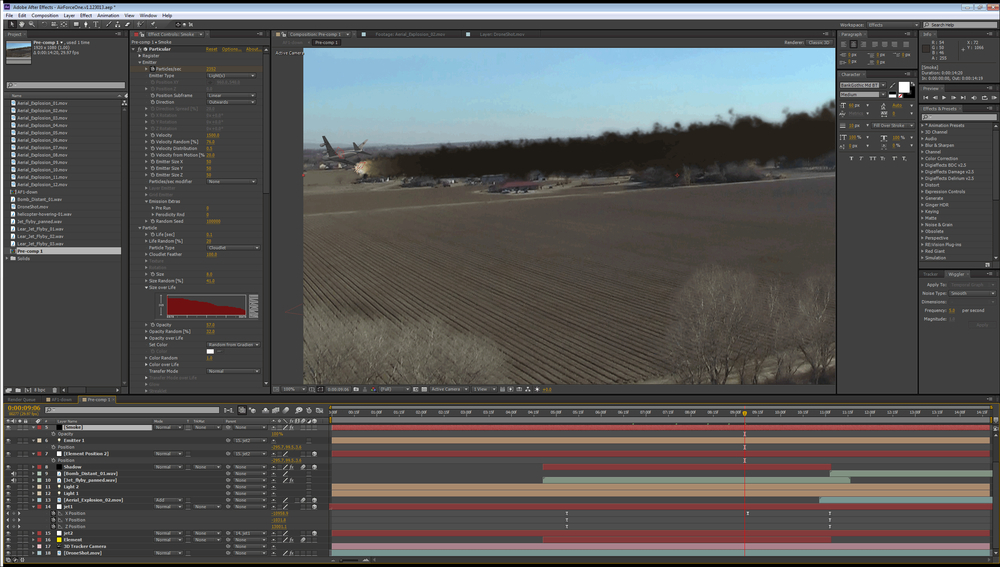
Pretty cool right? We've got a big problem though. Earlier in the timeline (where our jet has the engine hidden by the cabin), the smoke is on top! We can fix this with a world position matte.

The world position map lets us create a matte based on the coordinates of the object. So, once we set it up, we can make the far wing appear black, and the cabin and the foreground wing appear white. Apply this to the smoke layer, and it will accurately mask it over time to make the smoke only appears where appropriate for our perspective! These mattes are quite versatile and very handy.
- First, duplicate your Element layer and move it directly above the smoke layer.
- On this second Element layer, open the Output twirly on the Element plugin. Play with these settings and experiment! For this scene, the settings should look like the following screenshot:
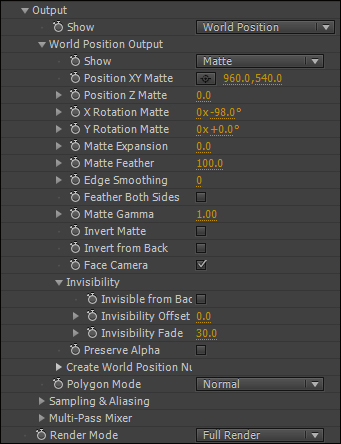
- Set the track matte for your smoke layer to
Luma Matte Inverted: Element 2.Your smoke is even better! Now, time for the light attached to the engine to mimic fire.
- Apply Optical Flares to a new layer (make the flare small and orange). It shouldn't be prominent. Remember, the best effects are the ones you don't notice!
- Duplicate your world position matte Element layer and apply the duplicate as another
Luma Matte Invertedto your flare layer. Now your smoke (and flares) appears at appropriate times. - We're almost done. Now to blend everything together a bit better, precomp everything.
- Create an adjustment layer.
- Add an Add Grain effect and apply the Tiffen DFX Film Stocks plugin. Choose your favorite film stock. To create the following screenshot, we used a Kodak Ektachrome look:
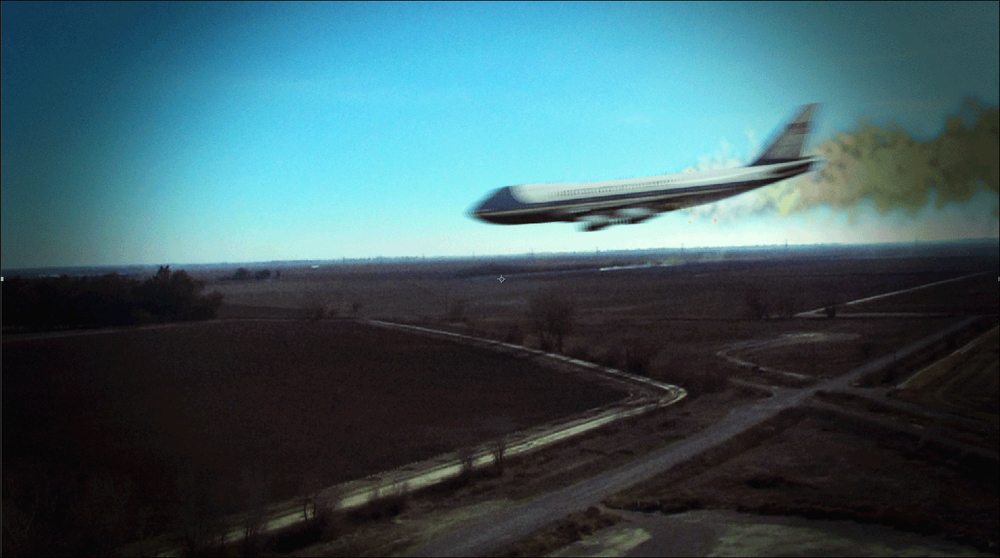
Granted, this Ektachrome look is a bit severe. But hey, we like severe sometimes, so there we are! Finally, use your precomp layer to add a bit of camera shake when the impact happens and you have a pretty spiffy special effect in only a couple of hours!
The fully rendered animation (and project) is available as part of the downloadable content.
